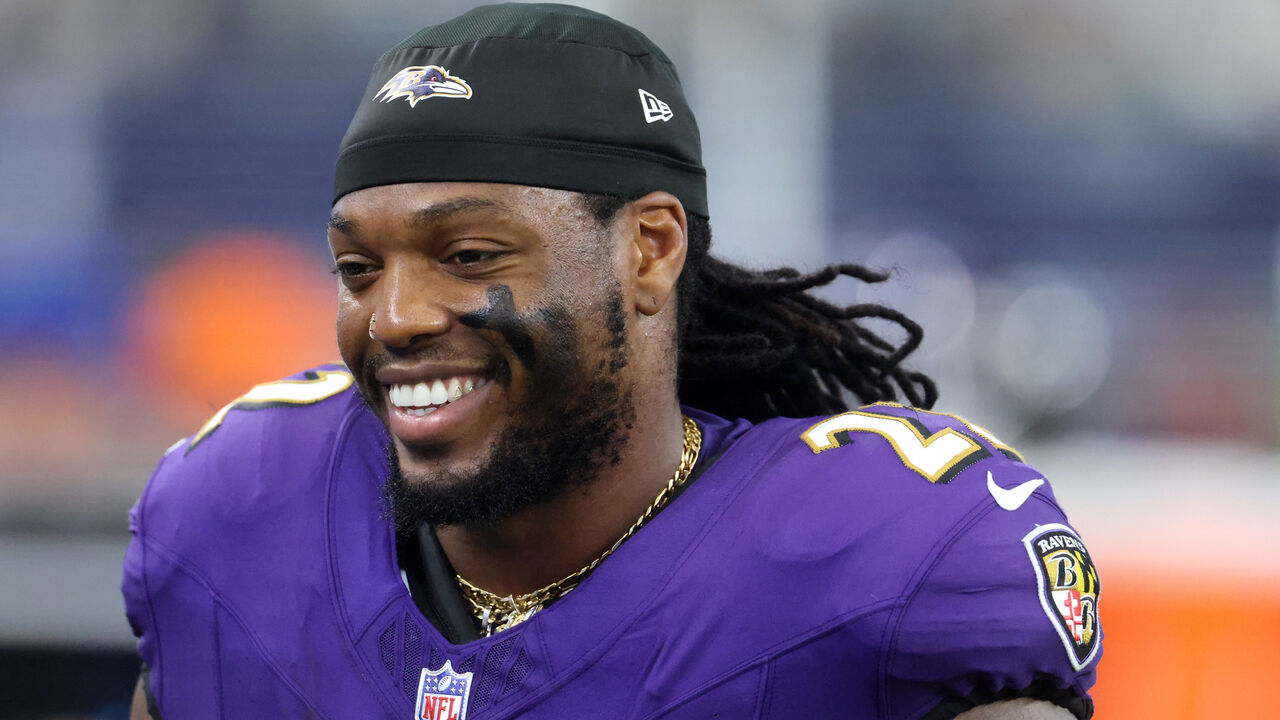Saquon's impressive season changes nothing about running backs' value
Saquon Barkley might signal the end of an era. But he may also be the spark of a throwback trend.
The New York Giants selected Barkley with the second overall pick in 2018. Even as it was happening, it was out of step with changing attitudes about the value of running backs. And over the next four drafts, no running back was taken higher than the 24th selection.
It was the confirmation of a trend: teams increasingly viewed running backs as replaceable assets. Even a productive runner could be swapped out for a younger back who could do a similar job for less money. The Giants eventually came around to this idea, letting Barkley walk in free agency last summer.
But Barkley's made the Giants look silly, which has admittedly not been that difficult a task in recent years. Now with the Philadelphia Eagles, he leads the the NFL in rushing yards and yards from scrimmage, and pushed himself into the MVP race after his bonkers 302-yard performance against the Rams last week.
Coupled with the fact the NFL's second- and third-leading rushers, Derrick Henry and Josh Jacobs, were also allowed to sign with new teams last offseason as free agents, the recent narrative about the position has been turned on its head: Are running backs truly valuable again?
It's an interesting question, both for real life and fantasy drafts alike. But the answer may also be: no.
It's not that any of the leading backs aren't great players, because they are. But their success so far this season is also a product of the teams they play for. The Eagles, Ravens, and Packers have long had strong running games supported by talented offensive lines. They are no different this season, with the added wrinkle of a runner capable of breaking long runs on any play.

Barkley leads the NFL with an average of 6.2 yards per rush, and Henry isn't far behind at 6.0. But Barkley also leads the NFL in yards before contact, at 4.2 per rush, per Football Reference, a product of playing behind the bunch of road graders that is the Eagles offensive line. Henry isn't far behind, at 3.5 yards before contact per rush, third among running backs behind Detroit's Jahmyr Gibbs.
Last year, playing on a lousy Giants team, Barkley averaged just 1.9 yards before contact per rush. Henry, playing on a hard-to-watch Titans team, averaged 2.0 yards before contact. (Although Henry, as close to a bulldozer as there is at the position, still managed to run for over 1,100 yards last season.)
Sort Football Reference's 2024 rushing stats by yards gained after contact and Barkley drops all the way down to 20th in the NFL, at 2.1 per rush. Henry's a respectable seventh at 2.5 yards after contact per rush. (The leader in the category is the appropriately named Tank Bigsby of the Jaguars, at 3.5 yards after contact per rush.)
None of this is, again, meant to knock Barkley or Henry. They're great! It's simply more evidence that running backs play in the context of their offensive lines, and that of the offense as a whole. Their quarterbacks, Jalen Hurts and Lamar Jackson, also loosen up defenses with their own running abilities.
Consider also the performance of some of the running backs who were displaced by the league leaders. J.K. Dobbins was great but injury-plagued with the pre-Henry Ravens, and he's been good again with the Los Angeles Chargers. (Although he's hurt, again.) The Packers moved on from Aaron Jones when they signed Jacobs, but Jones signed with the Vikings and is well on his way to a 1,000-yard season on a good Minnesota team.
And in San Francisco, where the 49ers lost the services of last year's NFL-leading rusher Christian McCaffery for most of the season, they simply plugged in undrafted Jordan Mason, who averaged more than five yards per carry while he was the lead back. That's a better average than McCaffery's managed (3.3) since his return.
Perhaps the best evidence that a running back like Barkley can only be as transformative as the players around him is the fact we've already seen what happens when his supporting cast isn't quite so impressive. Over six seasons in New York, a very large sample size, he averaged 70.4 rushing yards per game. He was the best player on the Giants for most of that time, but couldn't make the offense productive on his own.

Dropped into a playoff-caliber team like the Eagles, he's now averaging 126.5 yards on the ground per game. He was Steve Rogers on the Giants; he's Captain America on the Eagles.
But it's also true that the success the free-agent backs have found with their new teams offers a lesson. Good teams can take advantage of an upgrade at the position. Bad teams are probably better off investing elsewhere.
That probably doesn't make Giants fans feel any better, though.
Scott Stinson is a contributing writer for theScore.